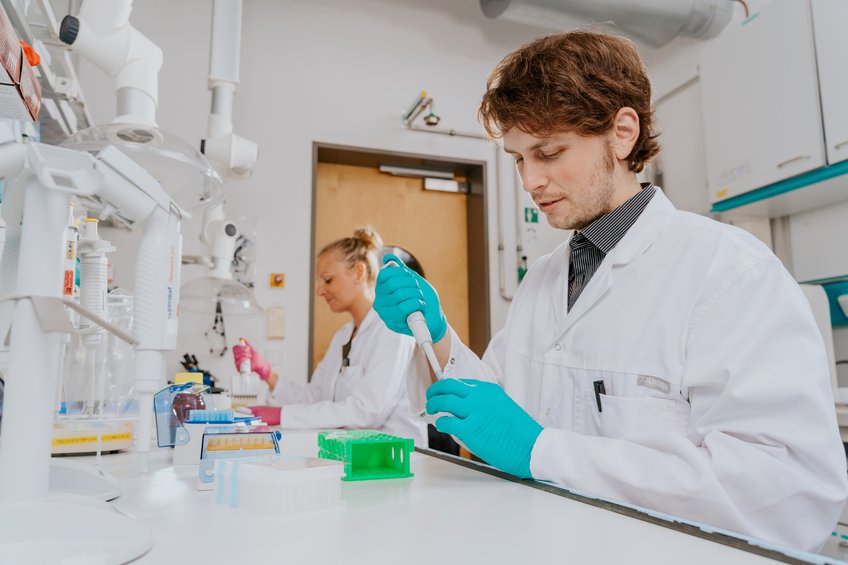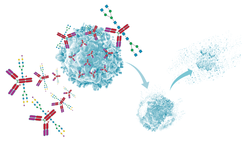
Glycans in Therapy
The majority of the membrane and secreted proteins carry a diversity of covalently attached oligosaccharide chains – glycans. Although only a minority of the various monosaccharides known in nature are found in glycans (e.g., fucose, galactose, mannose, N-acetylglucosamine, N-acetylgalactosamine, sialic acid), the diversity of glycans is enormous, especially in comparison to other building blocks of life. The high complexity of glycan structures arises from variations in number, order, and type of monosaccharide units, as well as from linkage positions, anomeric configurations, branching patterns, and additional modifications like acetylation or sulfation. Even a small variation in glycan structure can have a major impact on protein structure and function, making detailed glycan characterization challenging, but of utmost importance.

Many of protein-based therapeutics are glycosylated. Quality attributes like biological activity, bioavailability, immunogenicity, stability and efficiency - important for the successful approval by the authorities - can be affected by glycosylation. For example, the attachment of different glycans on IgG antibody can have dramatic consequences for its effector functions, ranging from pro- to anti-inflammatory. It is therefore indispensable to characterize and monitor the glycosylation during R&D and production. To facilitate this effort, we are developing high-throughput and high-resolution glycoanalysis methods that enable automated and detailed glycan characterization. The analytical platforms that we can use include xCGE-LIF, UPLC-FLR, MALDI-TOF-MS, and LC-ESI-MS. We could show successful application of methods for the analysis of IgG and EPO glycosylation [1,2], both being important biopharmaceuticals.
In the biopharmaceutical industry, therapeutic glycoproteins are predominantly produced in mammalian cell culture systems. The glycosylation pattern can be variable and dependent on the production conditions, including the cell line, bioprocess, and cell culture media. Vaccines such as recombinant and viral proteins are another big sector of biopharmaceutical products. The Bioprocess Enginnering Group has a longstanding interest and expertise in production of influenza A viruses in mammalian cell cultures [LINK to Upstream Group]. With the analytical workflow developed in our group, we can investigate the impact of cultivation conditions on viral protein glycosylation in various cell culture-based influenza vaccine production systems [3–8]. Recently, we have investigated and compared the N-glycosylation of influenza virus A glycoproteins derived from adherent and suspension cell lines. Thereby, we were using a combination of glycomics and glycoproteomics techniques that allowed us to obtain a comprehensive description of the N-glycosylation of the influenza antigens hemagglutinin and neuraminidase. Another field of interest is the impact of glycosylation on the immunogenicity of influenza virus vaccines [8]. The findings we gained will have implications for the design of influenza virus vaccines, particularly for the selection of suitable production cell lines and virus strains.
The discovery that differentiated cells can be reprogrammed to pluripotency and other cell fates opened up a remarkable possibility for regenerative medicine and cell-transplantation therapy. One attractive application is the generation of cardiomyocytes from a patient’s own cells for cardiovascular repair and regeneration (e.g., after cardiac failure), reducing the risk of immune rejection. Although promising, still many challenges lie ahead before the therapeutic potential of this approach can be fully recognized. One prerequisite is a detailed characterization of the glycosylation of such reprogrammed cells. In close collaboration with Hannover Medical School, we recently studied the N-glycosylation of human induced pluripotent stem cell-derived cardiomyocytes, which allowed us to gain a better understanding of cardiomyogenic differentiation in vitro [9].
